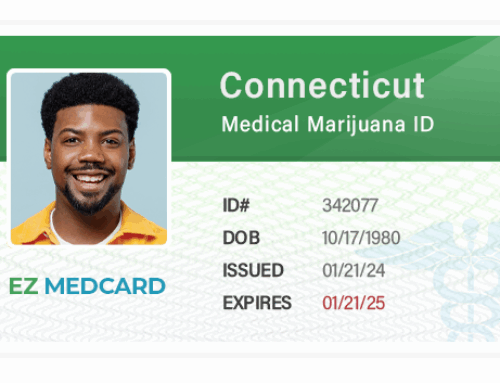6 Benefits Of Using Medical Marijuana For Epilepsy Treatment
Are you finding yourself sneezing, coughing, and itching after smoking marijuana? You may be thinking that these symptoms are all in your head, but believe it or not, you could very possibly have an allergy to weed! While the idea of being allergic to something usually associated with feeling relaxed might seem strange, it is a real phenomenon. Nowadays more and more people are turning to marijuana for medicinal and recreational purposes which makes learning about cannabis allergies even more important. In this blog post, we will provide information about what a weed allergy is, its common symptoms, as well as ways of identifying if you may be suffering from one. Read on to learn how to protect yourself against potentially harmful reactions.
What’s Inside?
- Key Takeaways
- What is Epilepsy?
- What Is Medical Marijuana?
- Benefit 1: Seizure Reduction
- Benefit 2: Improved Quality of Life
- Benefit 3: Fewer Side Effects
- Benefit 4: Personalized Treatment
- Benefit 5: Neuroprotective Properties
- Benefit 6: Potential Reduction in Medication Costs
- How to Obtain a Medical Marijuana Card for Epilepsy
- Factors to Consider When Choosing a Medical Marijuana Card Provider
- Frequently Asked Questions
- Conclusion
Key Takeaways
✔ Epilepsy is a neurological disorder characterized by recurrent seizures.
✔ Medical marijuana is being explored as an alternative treatment for epilepsy.
✔ Cannabinoids in medical marijuana may reduce seizures by interacting with the endocannabinoid system.
✔ It can enhance the overall quality of life for epilepsy patients by managing symptoms like anxiety and depression.
✔ Medical marijuana is often gentler than traditional medications, with fewer severe side effects.
✔ Patients can personalize their treatment by selecting strains and administration methods.
✔ Medical marijuana may have neuroprotective properties, safeguarding the brain from seizure-related damage.
✔ It can be a cost-effective option compared to traditional epilepsy medications.
What is Epilepsy?
Epilepsy is a neurological condition that affects the brain’s normal functioning. It is characterized by recurring seizures, which are abnormal bursts of electrical activity in the brain. These electrical disturbances can lead to seizures, each with distinct symptoms and effects.
Types of Seizures
Generalized Seizures
These seizures affect both sides of the brain and typically result in loss of consciousness. Common types include tonic-clonic seizures (formerly known as grand mal seizures) and absence seizures.
Focal (Partial) Seizures
Focal seizures originate in one specific brain area. They can be simple focal seizures, which do not involve loss of consciousness, or complex focal seizures, which often result in altered awareness and behavior.
Non-Epileptic Seizures
Some events may mimic seizures but are not caused by abnormal brain electrical activity. These are known as non-epileptic seizures and have various underlying causes.

Seizure Symptoms
Seizure symptoms can vary widely depending on the type of seizure and the affected brain regions. Common symptoms include:
Uncontrolled muscle movements or convulsions
Loss of consciousness or awareness
Changes in behavior or emotions
Staring spells
Memory lapses
Sensory disturbances, such as tingling or strange smells

Treatment for Epilepsy
Effective treatment is crucial in managing epilepsy and improving the quality of life for patients. Treatment options often include:
Antiepileptic Medications
These medications are crucial in managing epilepsy by regulating the brain’s abnormal electrical activity and reducing seizures’ frequency and severity. They are often a primary treatment choice for epilepsy patients.
Surgery
Surgical procedures may be recommended when seizures are localized and medication proves ineffective. These surgeries aim to remove or modify the brain tissue responsible for triggering seizures, offering the potential for long-term seizure control.
Vagus Nerve Stimulation (VNS)
VNS therapy involves the implantation of a device that stimulates the vagus nerve, helping to decrease the frequency of seizures. It can be a valuable option for patients who don’t respond well to medications or surgery.
Ketogenic Diet
Particularly beneficial for children with epilepsy, the ketogenic diet is a high-fat, low-carbohydrate dietary approach that has shown promise in reducing seizures. It can be an adjunct therapy used alongside medications or other treatments.
Lifestyle Modifications
Managing epilepsy often involves lifestyle adjustments such as identifying and avoiding triggers, managing stress, and establishing a consistent sleep schedule. These modifications can complement other treatments and contribute to seizure reduction and improved quality of life.

What Is Medical Marijuana?
Medical marijuana, often referred to as “medical cannabis,” is a term used to describe the use of the cannabis plant and its cannabinoids for therapeutic or medicinal purposes. This alternative treatment approach has gained increasing attention and acceptance in recent years due to its potential benefits for various medical conditions.
The Cannabis Plant
Medical marijuana is derived from the cannabis plant, cultivated and used for centuries for its medicinal and recreational properties. The plant contains over 100 different compounds known as cannabinoids, each with its unique effects on the body.
Key Cannabinoids
Two of the most well-known cannabinoids found in the cannabis plant are THC (tetrahydrocannabinol) and CBD (cannabidiol):
THC (Tetrahydrocannabinol)
THC is the psychoactive compound in cannabis responsible for the “high” or euphoric feeling often associated with marijuana use. It has therapeutic properties but can also produce mind-altering effects.
CBD (Cannabidiol)
CBD is another prominent cannabinoid known for its potential therapeutic benefits. Unlike THC, it is non-psychoactive, meaning it does not produce a high. CBD is the primary focus of many medical marijuana products due to its various potential medical applications.
Medical Applications
Medical marijuana is used to treat a wide range of medical conditions and symptoms, including but not limited to:
Pain Management
It can help alleviate chronic and neuropathic pain associated with cancer, arthritis, and multiple sclerosis.
Seizure Disorders
Medical marijuana has shown promise in reducing the frequency and severity of seizures in epilepsy patients.
Anxiety and Depression
CBD, in particular, has been studied for its potential to reduce anxiety and depression symptoms.
Nausea and Vomiting
It can effectively reduce nausea and vomiting associated with chemotherapy and other medical treatments.
Appetite Stimulation
Medical marijuana can help stimulate appetite, which can be particularly beneficial for individuals with conditions like HIV/AIDS or cancer.
Inflammatory Disorders
Some patients use medical marijuana to manage inflammation associated with Crohn’s disease and rheumatoid arthritis.
Administration Methods
Medical marijuana can be administered in various forms, including:
Oral Products
Medical marijuana offers various options, such as oils, capsules, and edibles. When consumed, they undergo digestion and metabolism in the digestive system, gradually releasing cannabinoids into the bloodstream, providing sustained relief.
Inhalation
Smoking and vaporization are popular methods for quick cannabinoid absorption. When inhaled, cannabinoids enter the bloodstream through the lungs, offering rapid relief for acute symptoms, making it a preferred choice for many patients.
Topical Applications
Creams, balms, and lotions infused with cannabinoids are designed for direct skin application. These topicals are excellent for targeting localized issues like muscle soreness or skin conditions, providing targeted relief where it’s needed most.
Sublingual Tinctures
Liquid extracts, known as tinctures, are placed under the tongue for sublingual absorption. This method allows for faster cannabinoid uptake, making it an efficient option for those seeking quick relief without inhalation.
Now that we’ve unveiled what epilepsy and medical marijuana are let’s dive into the six benefits of using medical marijuana for epilepsy treatment.
Benefit 1: Seizure Reduction
Epilepsy is characterized by recurring seizures, which can be unpredictable and debilitating. Conventional epilepsy medications may not work for everyone and often have many side effects. This is where medical marijuana comes into play, offering a potentially life-changing benefit: seizure reduction.
The Science Behind It
Medical marijuana contains cannabinoids, such as CBD (cannabidiol), which interact with the endocannabinoid system in the body. This system is crucial in regulating various physiological processes, including neuronal activity. By modulating this activity, medical marijuana may help reduce the frequency and severity of seizures in epilepsy patients.
Benefit 2: Improved Quality of Life
Epilepsy can shadow an individual’s life, affecting their physical and emotional well-being. Frequent seizures, coupled with their uncertainty, can lead to anxiety, depression, and a diminished overall quality of life. Medical marijuana offers hope by addressing seizures and improving the overall quality of life for epilepsy patients.
Managing Epilepsy-Related Symptoms
Beyond seizure control, medical marijuana may alleviate some symptoms often accompanying epilepsy. Anxiety and depression, prevalent in epilepsy patients, can be effectively managed with medical marijuana in New York, leading to a more stable emotional state.
Benefit 3: Fewer Side Effects
Traditional epilepsy medications frequently come with a laundry list of side effects that can be challenging for patients to manage. These side effects may include dizziness, fatigue, and cognitive impairment. In contrast, medical marijuana is often considered a gentler treatment option with fewer severe side effects.
A Gentler Option
Compared to conventional medications, medical marijuana is generally better tolerated by patients. While it’s not devoid of side effects, many individuals find the side effects milder and more manageable, enhancing their overall treatment experience.
Safety Considerations
It’s important to note that medical marijuana is not entirely without risks. Patients should work closely with healthcare professionals to monitor its effects and adjust their treatment plans. However, the trend toward fewer and less severe side effects can significantly improve a patient’s treatment journey.
Benefit 4: Personalized Treatment
Every individual’s experience with epilepsy is unique, and what works for one may not work for another. Medical marijuana offers personalized treatment options, allowing patients and healthcare providers to tailor therapy to individual needs.
Customizing Strains and How You Take Them
Medical marijuana comes in various strains, each with its unique cannabinoid profile. This diversity makes selecting a strain that aligns with a patient’s requirements possible. Additionally, different delivery methods, such as oils, tinctures, or vaporization, provide flexibility in administering the treatment.
Benefit 5: Neuroprotective Properties
Epileptic seizures can inflict significant damage on the brain over time, making it imperative to find treatments that control seizures and protect the brain from harm. Medical marijuana has shown promise in this regard.
How Cannabinoids Protect
Research suggests that cannabinoids found in medical marijuana may have neuroprotective properties. This means they can shield the brain from the damage caused by seizures, potentially preventing long-term cognitive impairment and other neurological consequences.
Benefit 6: Cost Savings
High Expenses of Epilepsy Medications
Traditional epilepsy medications can be costly, especially for patients who require multiple medications or those with limited insurance coverage. The cumulative expense can become a significant financial strain over time.
How to Obtain a Medical Marijuana Card for Epilepsy
Before embarking on the journey to obtain your medical marijuana card for epilepsy, it’s crucial to understand the necessary steps and considerations. Here’s a comprehensive guide to help you navigate this process effectively:
Understand Your State’s Laws
Each state maintains its set of laws governing the use of medical cannabis, which includes guidelines on who qualifies for treatment, the application process, and the legal boundaries associated with possession and use.
Consult a Healthcare Professional
Book an appointment with a healthcare provider who can diagnose and verify your epilepsy condition. These medical experts are indispensable as they will provide you with essential documentation and professional recommendations for the medical marijuana card application process.
Gather Medical Records
Gather comprehensive medical records encompass pertinent test results, prescriptions, and documentation chronicling your epilepsy diagnosis and treatment history. This trove of medical documentation serves as compelling evidence and substantiates the legitimacy of your medical marijuana card application.
Schedule an Evaluation
Arrange an evaluation appointment with the qualified medical marijuana doctor you’ve selected. During this assessment, you’ll need to be prepared to engage in a detailed discussion about your epilepsy symptoms, your medical history, and the reasons why you believe medical marijuana could provide effective relief and management.
Receive a Recommendation
Upon conducting a thorough evaluation, if the medical marijuana doctor deems medical cannabis to be a suitable course of treatment for your epilepsy, they will provide you with a formal written recommendation or certification. This documentation is the critical foundation of your application for a medical marijuana card.
Complete the Application
Access the necessary application forms from your state’s official medical marijuana program website or visit their physical office to obtain the required paperwork. Carefully and accurately complete the application, ensuring you attach your doctor’s written recommendation and all relevant medical records that substantiate your need for medical marijuana.
Submit Your Application
Once you’ve diligently filled out your application, submit it to your state’s medical marijuana program and any requisite fees outlined by your state’s regulations. Follow the specific submission instructions meticulously, ensuring your application is complete and complies with all legal requirements.
Factors to Consider When Choosing a Medical Marijuana Card Provider
Obtaining a medical marijuana card is pivotal for patients seeking alternative treatments for their health conditions. However, choosing the right medical marijuana card provider ensures a smooth and legally compliant process. Here are key factors to consider when making this important decision:
Certification and Licensing
Ensure the provider is certified and licensed to recommend medical marijuana in your state. Only licensed medical professionals can legally issue medical marijuana recommendations.
Experience and Reputation
Research the provider’s experience and reputation. Seek recommendations from trusted sources or read reviews online. A provider with a positive track record and a history of helping patients effectively is preferable.
Compliance with State Laws
Confirm that the provider is well-versed in your state’s medical marijuana laws and regulations. They should be up-to-date with changes and ensure your application meets all legal requirements.
Accessibility and Location
Consider the provider’s location and accessibility. Are they conveniently located, and are their office hours compatible with your schedule? Telehealth options may also be available, making the process more accessible.
Patient-Focused Approach
Choose a reliable provider like EZMEDCARD, which prioritizes the well-being of patients. They should take the time to understand your medical history, answer your questions, and provide personalized recommendations based on your condition.
Transparent Pricing
Understand the provider’s fee structure. Be cautious of providers who charge exorbitant fees for their services. Ensure that you know the total cost, including any follow-up appointments.
Professionalism and Ethics
Evaluate the provider’s professionalism and ethical standards. They should maintain patient confidentiality, uphold medical ethics, and provide accurate information about medical marijuana in New York.
Supportive Services
Inquire about additional services or resources the provider offers, such as guidance on selecting suitable strains, dosages, and administration methods. A provider who offers comprehensive support can enhance your treatment experience.
Frequently Asked Questions
1. Can medical marijuana completely cure epilepsy, or is it primarily used to manage symptoms?
Medical marijuana is often used to manage and reduce the frequency of seizures in epilepsy patients. While it can be highly effective for some individuals, it may not necessarily provide a complete cure. The extent of its effectiveness can vary from person to person.
2. How do I know if I qualify for a medical marijuana card for epilepsy in my state?
Qualification criteria for a medical marijuana card can differ from state to state. Generally, you must have a qualifying medical condition, such as epilepsy, and meet specific requirements outlined by your state’s medical marijuana program. Consult your state’s program website or a healthcare provider for detailed eligibility information.
3. Are there any restrictions on where I can use medical marijuana if I have an epilepsy card?
Laws regarding the use of medical marijuana in public places, at work, or while operating a vehicle vary by state. It’s essential to familiarize yourself with your state’s regulations to ensure you use medical marijuana in compliance with the law.
4. Can I travel with medical marijuana with a valid epilepsy card?
Traveling with medical marijuana can be complex, depending on state and federal regulations. Some states have reciprocity agreements that allow visitors with valid medical marijuana cards to use their medication, while others may not. Researching and planning ahead is crucial when traveling with medical marijuana.
5. How long does it typically take to receive a medical marijuana card for epilepsy once I’ve submitted my application?
The processing time for medical marijuana card applications can vary from state to state. It may take several weeks to receive your card after submitting your application. Check with your state’s medical marijuana program for estimated processing times and additional requirements for expediting the process.
Unlock a Better Life with Medical Marijuana for Epilepsy Today!
Medical marijuana offers substantial benefits to individuals with epilepsy, including reduced seizures, improved well-being, and fewer side effects than traditional treatments. Its neuroprotective properties and potential cost savings make it an appealing option. We recommend exploring these advantages and obtaining a medical marijuana card in New York; we recommend EZMEDCARD. Our expertise and patient-centered approach will assist you in navigating the journey better to manage your epilepsy with medical marijuana in New York.
Contact EZMEDCARD today and take a proactive step toward managing your epilepsy with medical marijuana. Your improved quality of life awaits.
FAQ
1. Is medical marijuana prescribed for epilepsy?
Yes, in some cases, medical marijuana can be prescribed for epilepsy, particularly for patients with difficult-to-treat seizures. While not a cure, some studies suggest it may help reduce seizure frequency and severity. However, it's important to note that research is ongoing, and medical marijuana is not a first-line treatment for epilepsy.
2. What strains of marijuana are good for epilepsy?
There's no one-size-fits-all answer, as the best strains for epilepsy can vary depending on the individual and their specific type of seizure. However, strains high in cannabidiol (CBD) and low in tetrahydrocannabinol (THC) are often explored first. CBD is a compound in marijuana that shows promise in reducing seizures, while THC is the psychoactive component that can cause intoxication.
3. Which CBD is best for epilepsy?
There isn't a specific type of CBD necessarily, but rather the concentration and delivery method that works best for each individual. Epidiolex is a purified CBD medication approved by the FDA to treat certain types of childhood epilepsy. However, it's crucial to consult with a healthcare professional to determine the most appropriate form and dosage of CBD for your specific needs.
4. Can Rick Simpson Oil (RSO) help seizures?
Rick Simpson Oil (RSO) is a high-THC cannabis concentrate. While some anecdotal evidence suggests it might help with seizures, there's limited scientific research to definitively support this claim. Furthermore, due to the high THC content, RSO can cause intoxication and other side effects. It's important to consult with a healthcare professional before considering RSO, especially for treating epilepsy.
5. Are there any side effects associated with using medical marijuana for epilepsy?
Yes, there can be side effects associated with using medical marijuana for epilepsy, depending on the specific strain and dosage used. Some potential side effects include:
- Drowsiness: THC, the psychoactive component in marijuana, can cause drowsiness and fatigue, which can be problematic depending on seizure types and daily activities.
- Impaired coordination: Similar to drowsiness, THC can impair coordination and balance, potentially increasing the risk of falls or injuries.
- Changes in mood or behavior: While some studies suggest marijuana may help with anxiety, in some individuals it might trigger negative mood swings or even paranoia.
- Digestive problems: Upset stomach, diarrhea, or changes in appetite are possible side effects, especially when consuming edibles.





